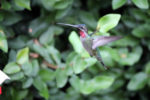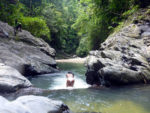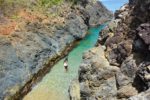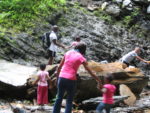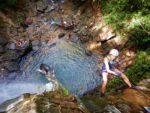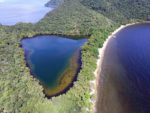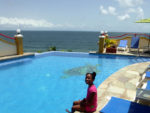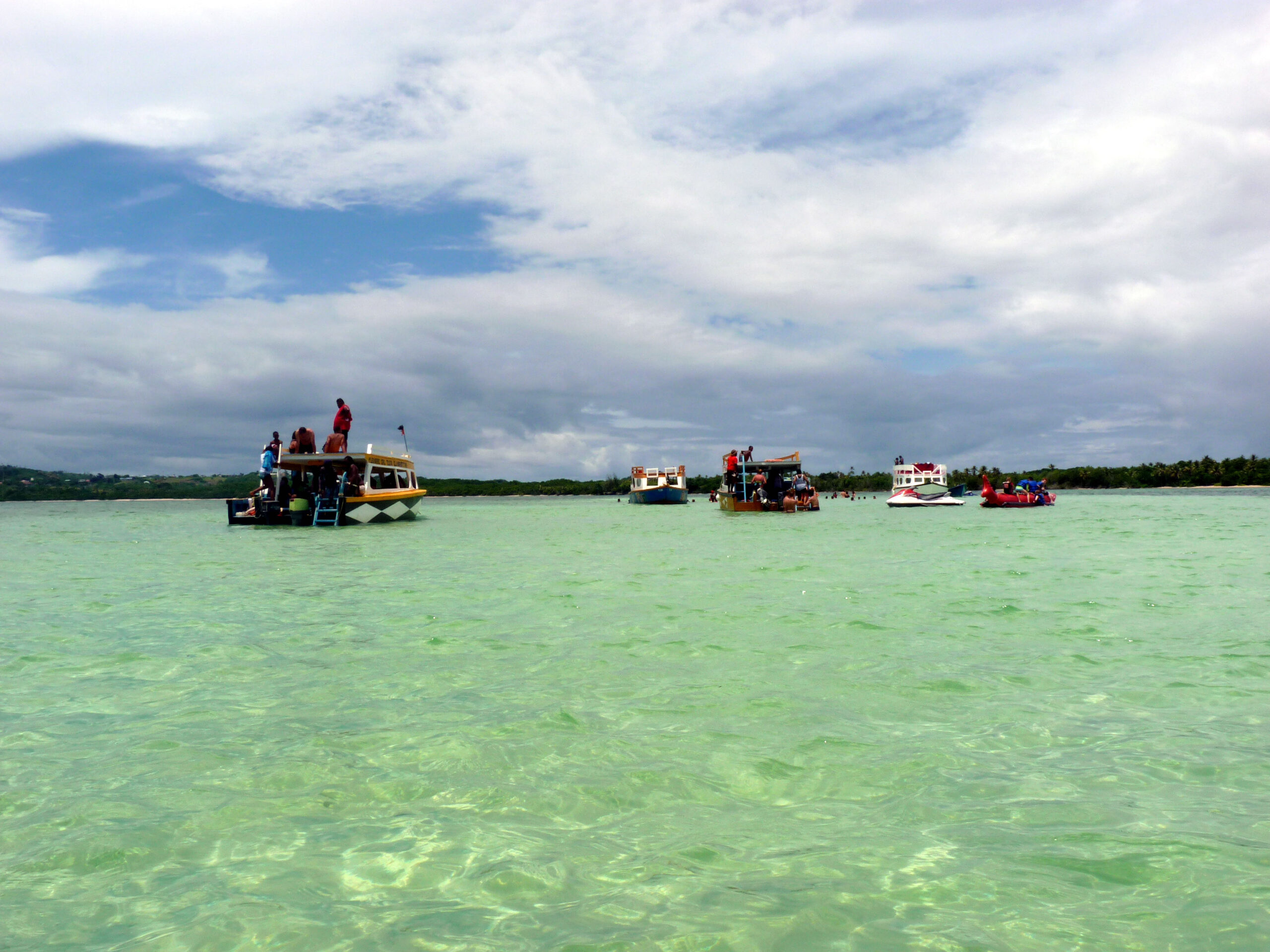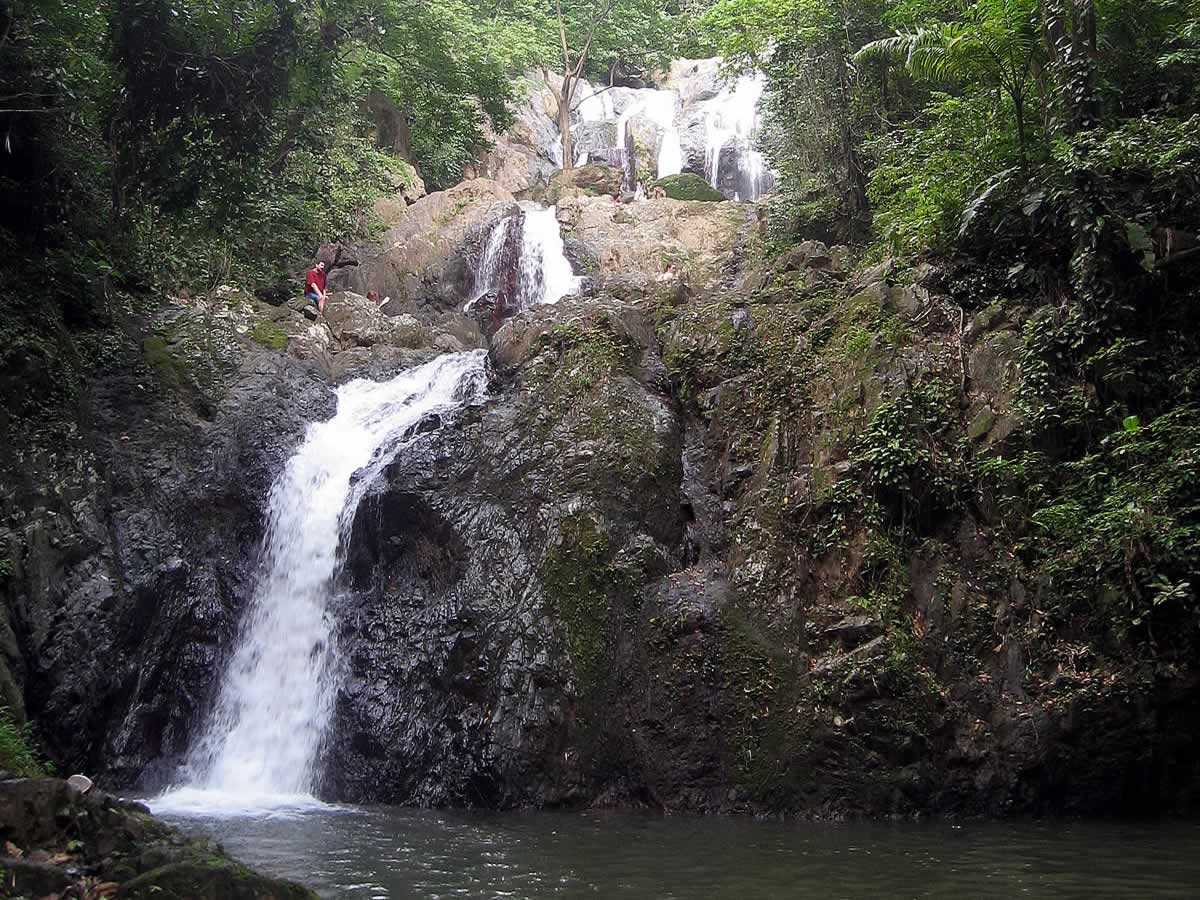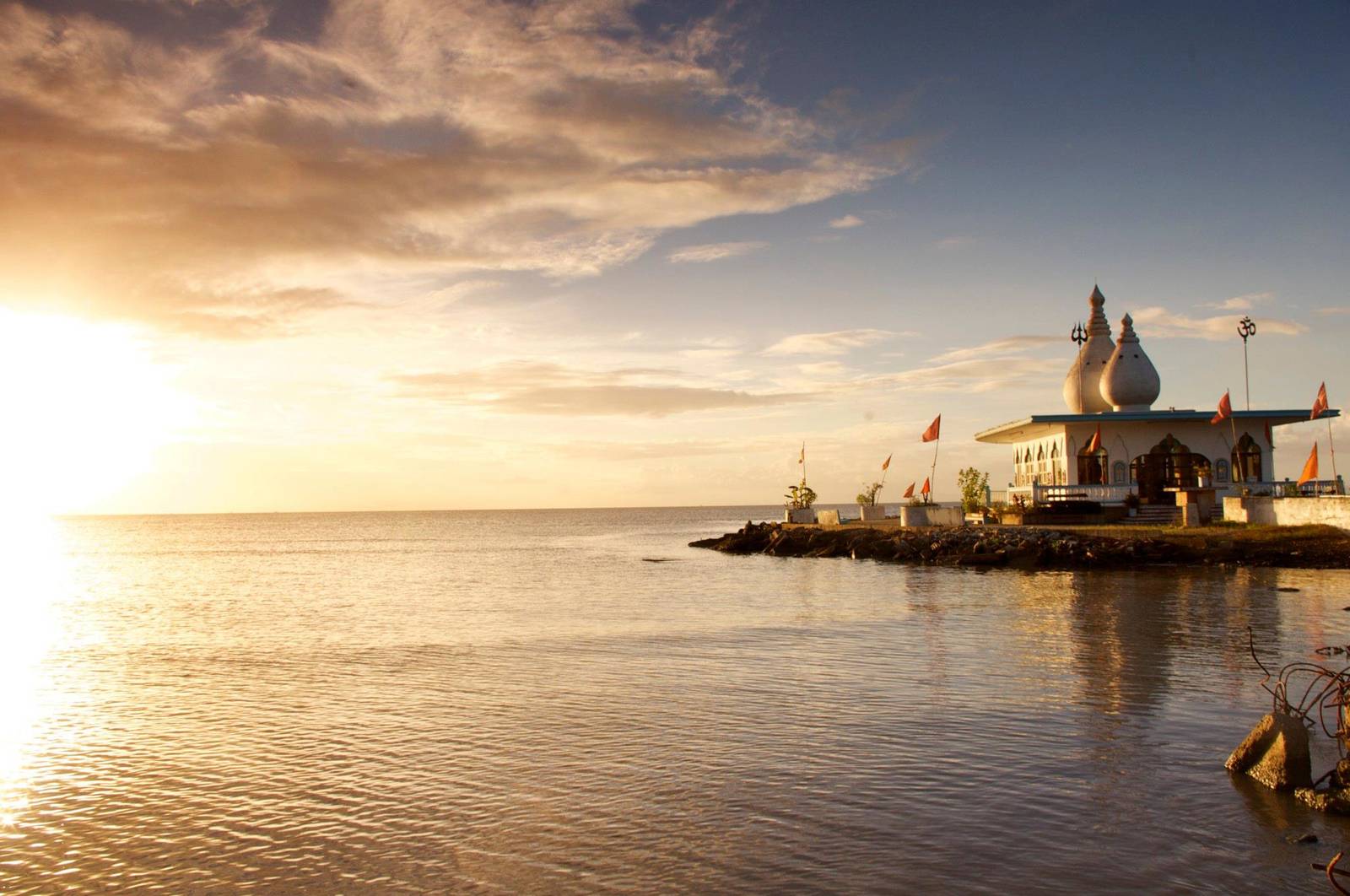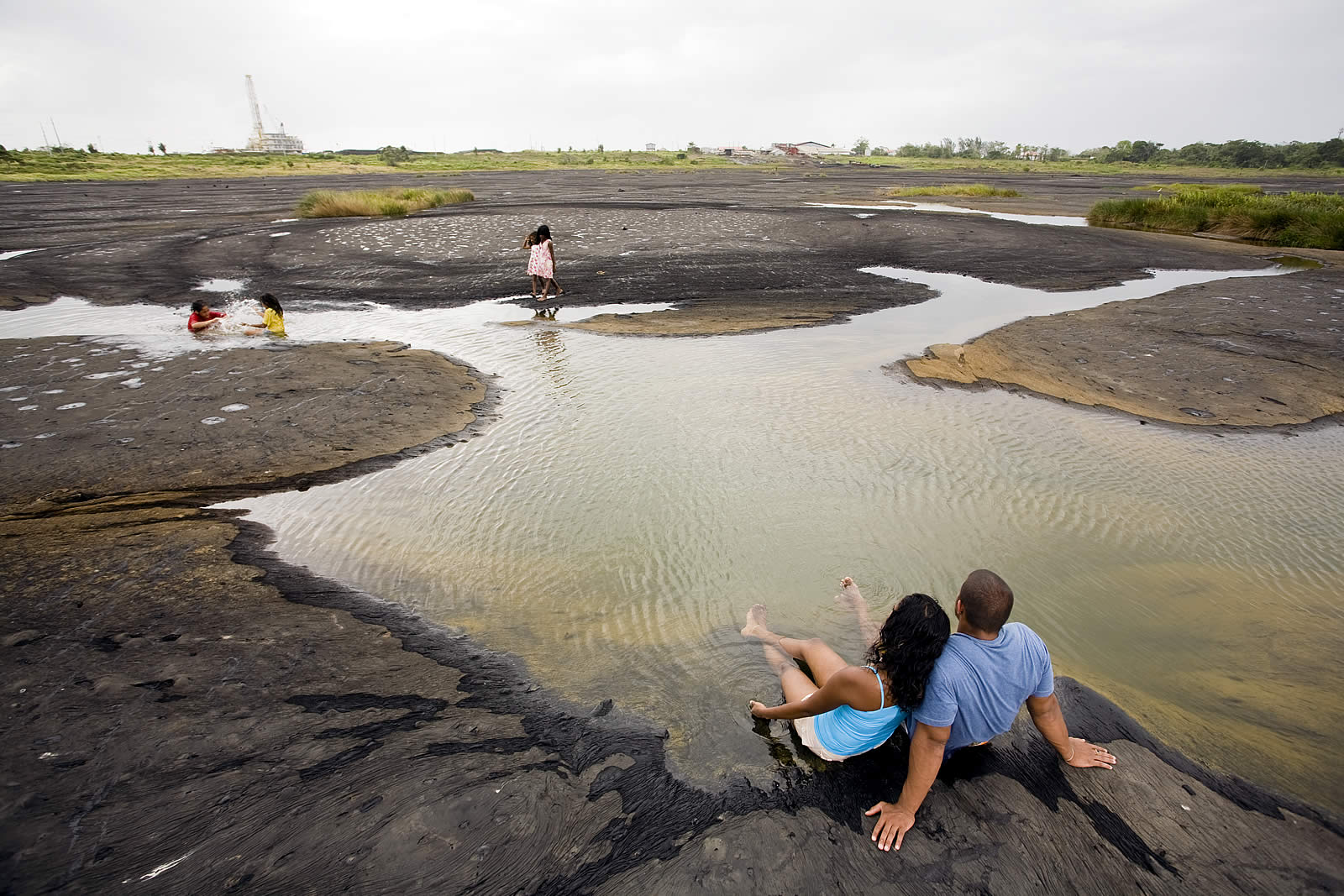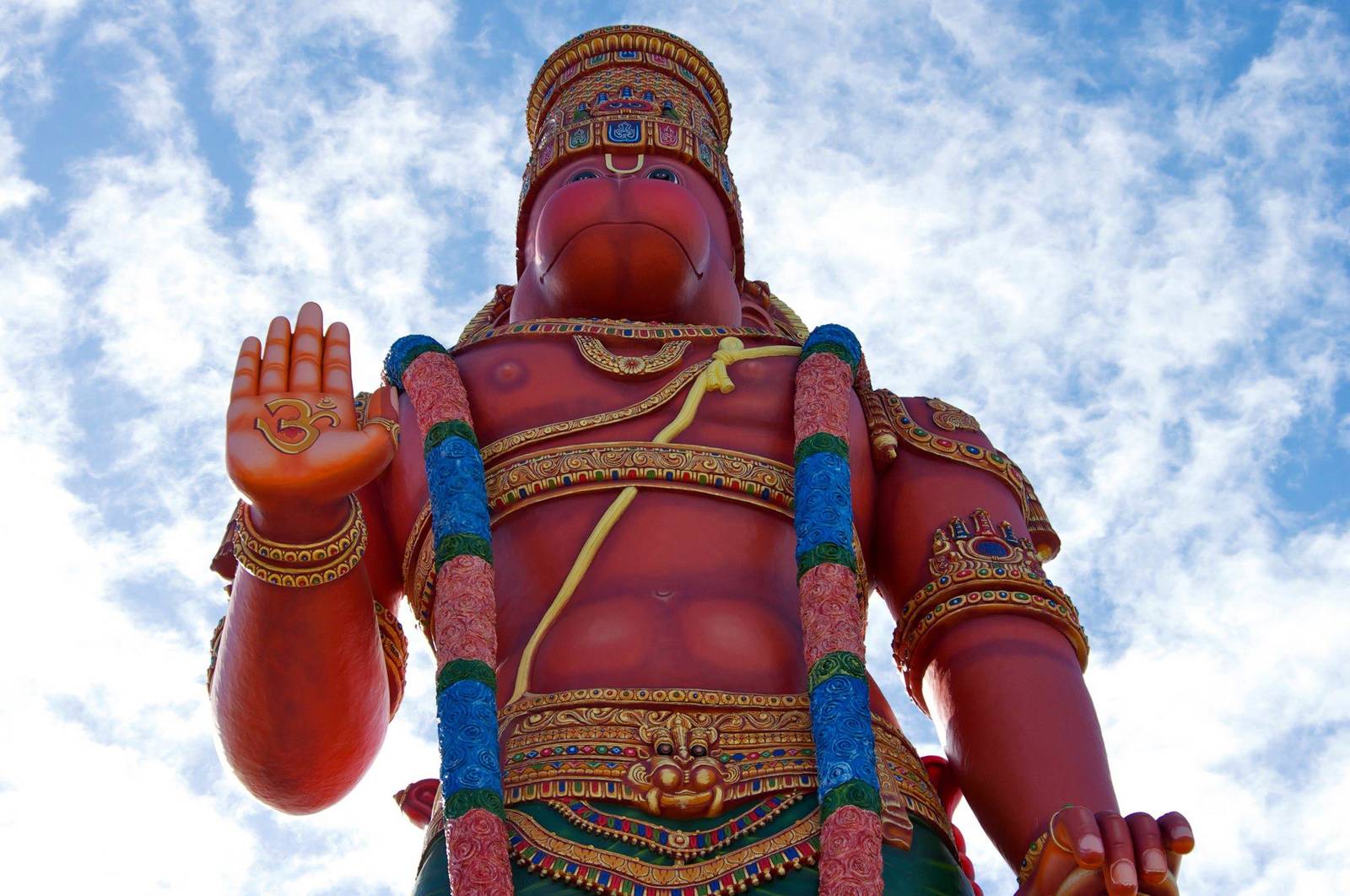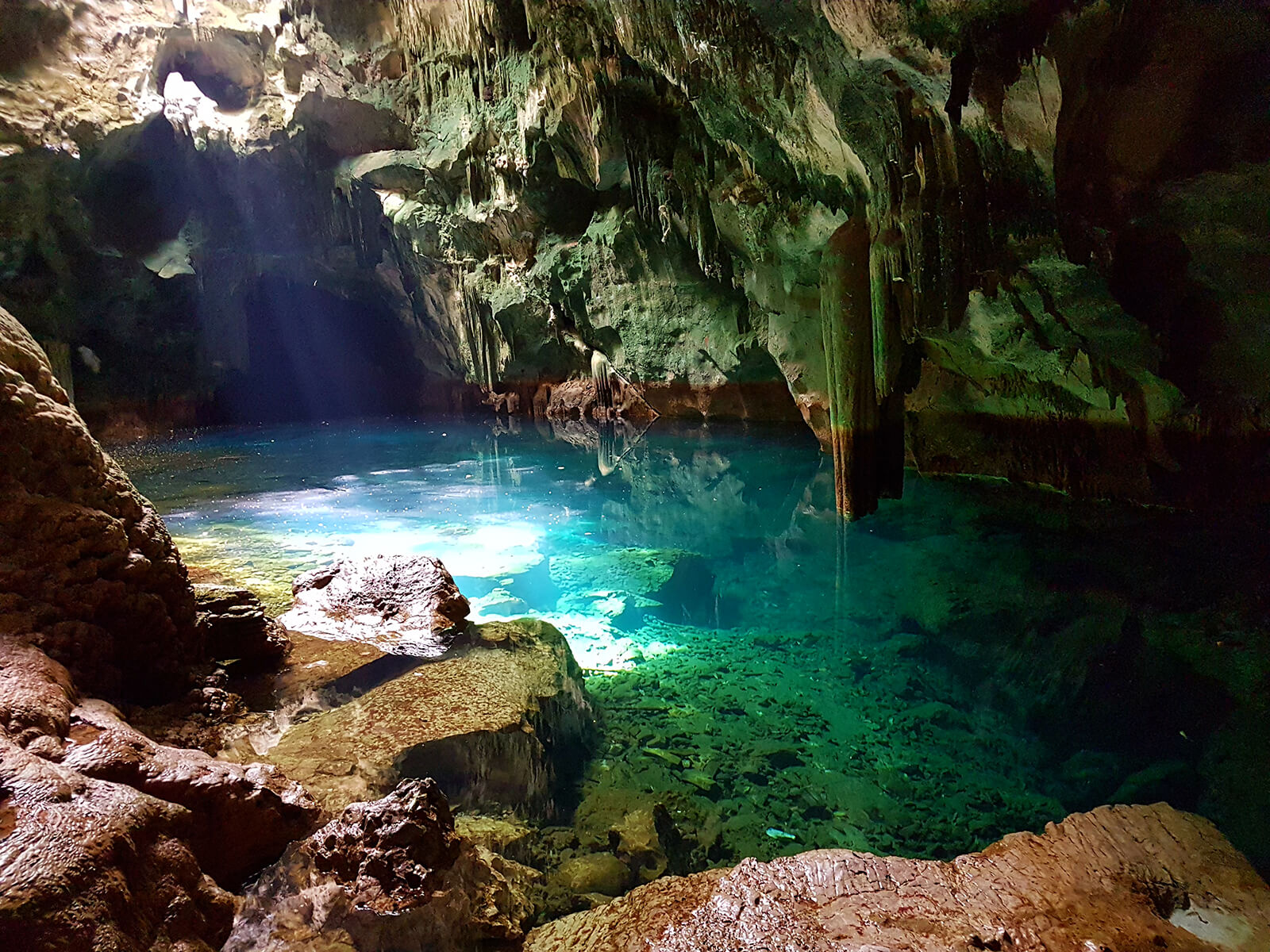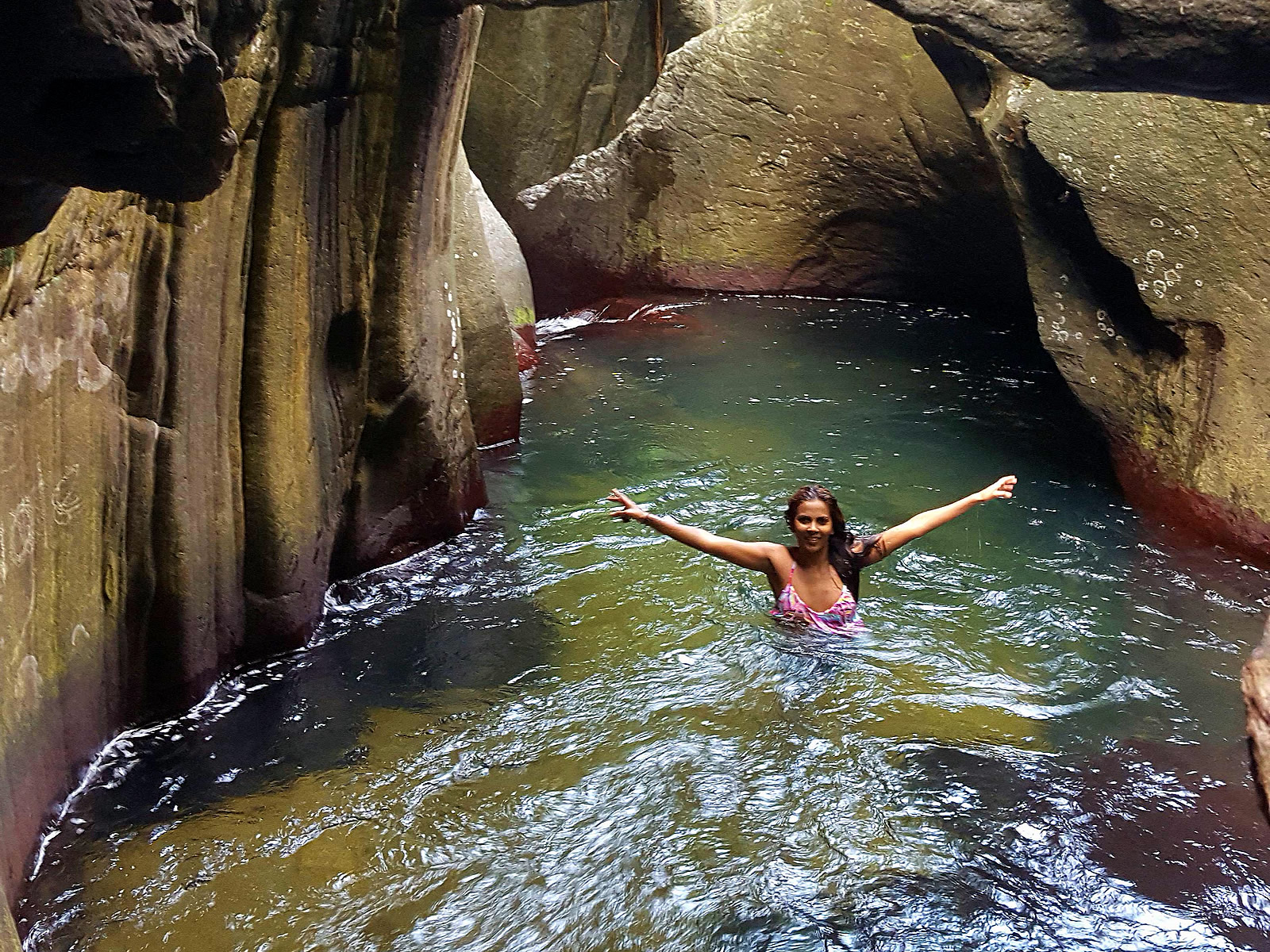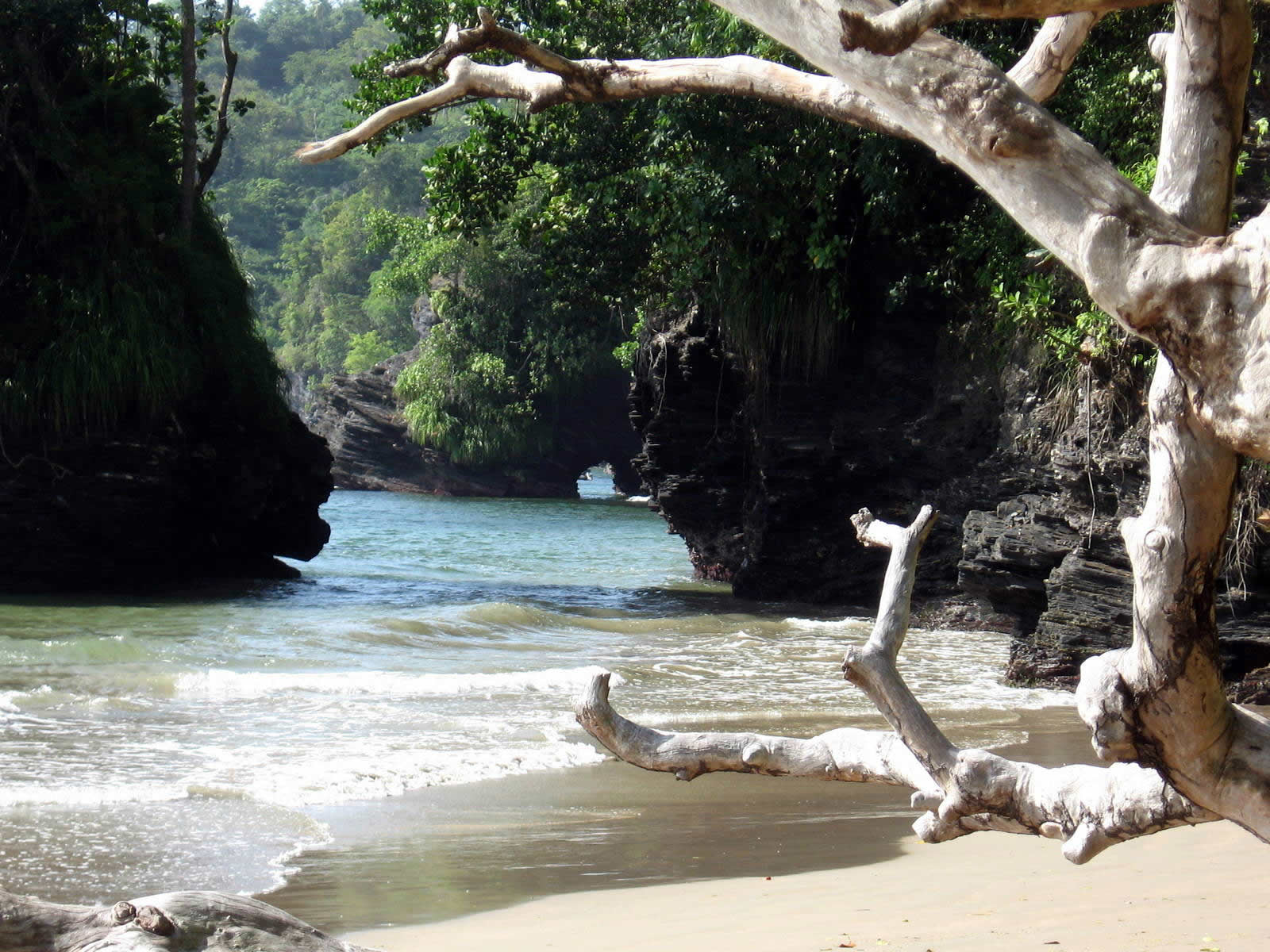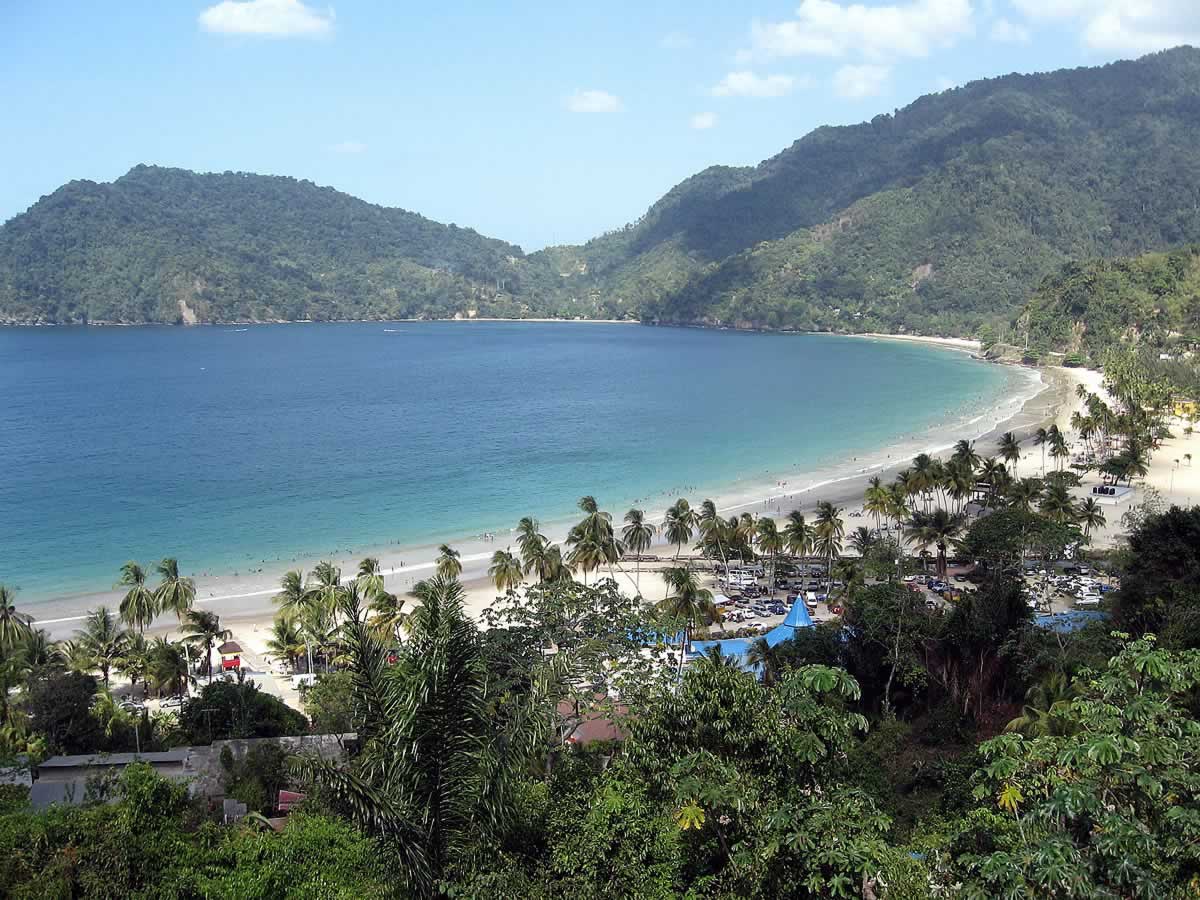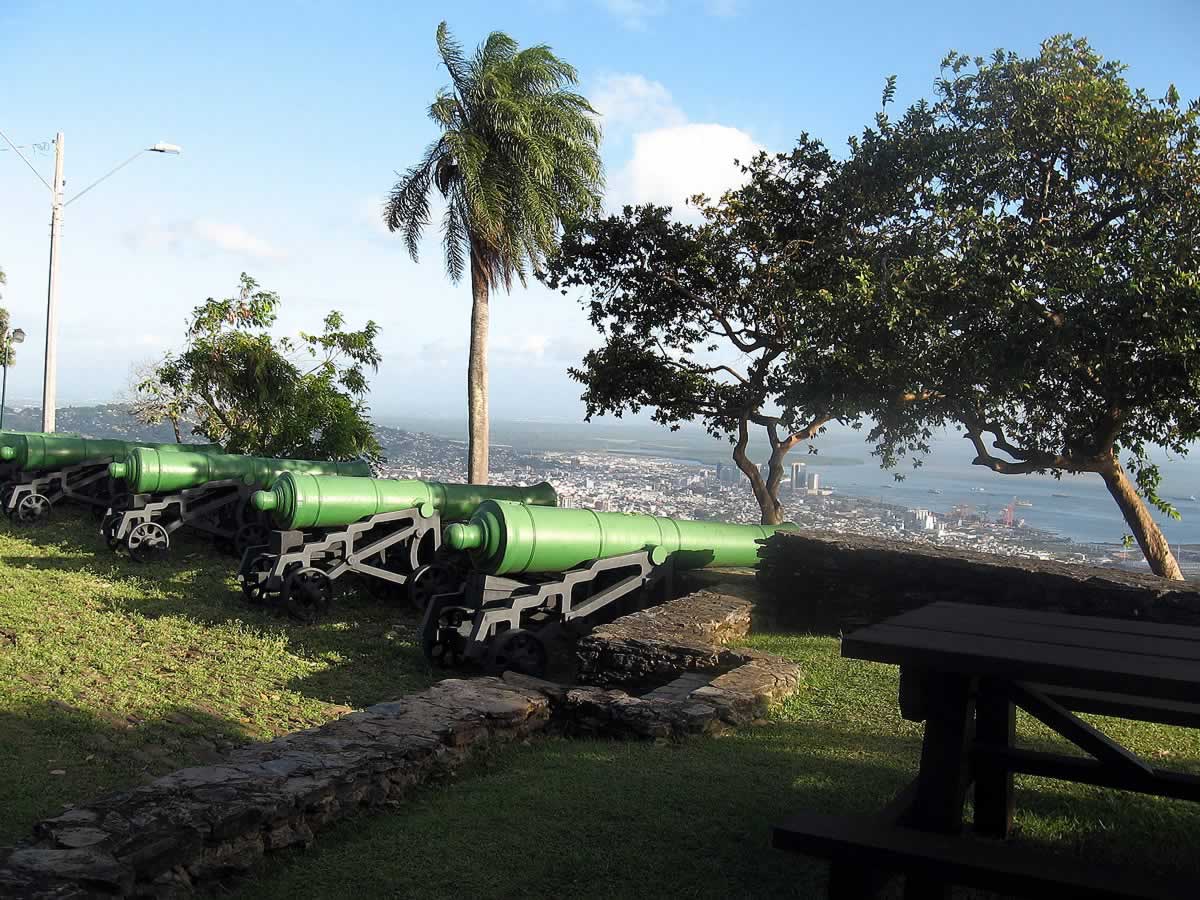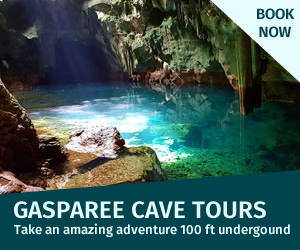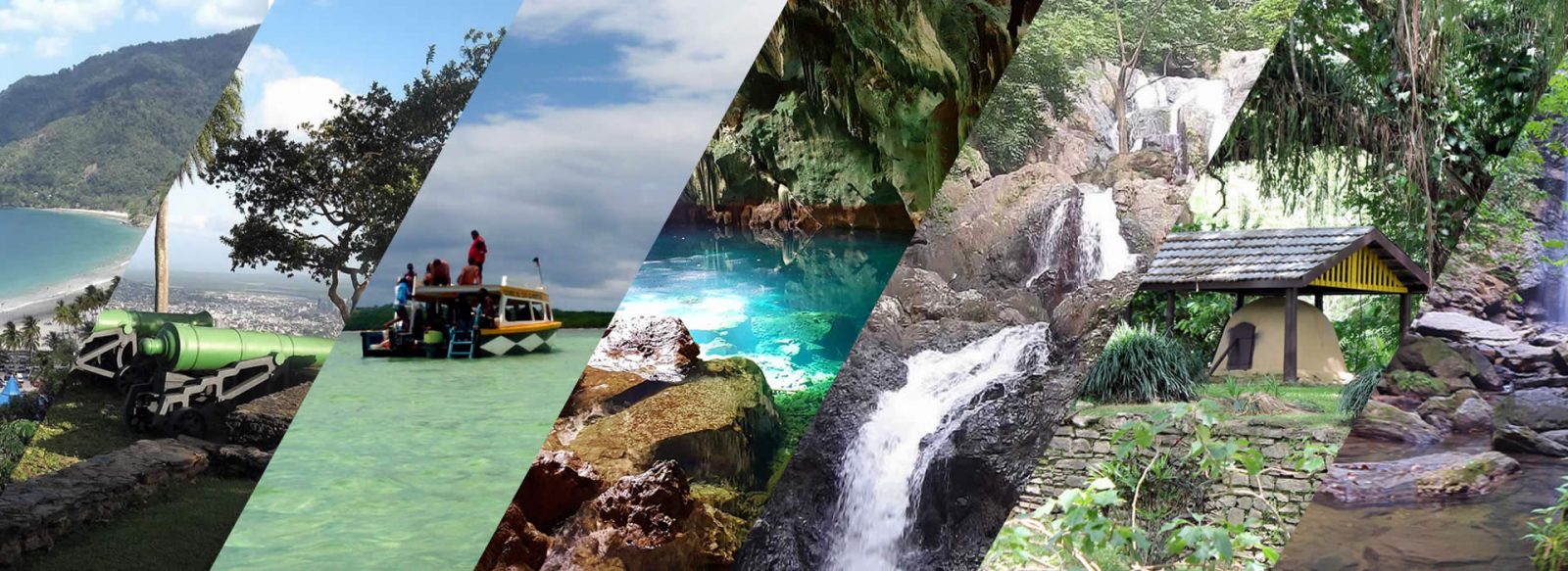
The most visited destinations in T&T in 2017
Ever wonder where in T&T everyone goes for an adventure, a new experience or to get away from it all? Take a hint from our visitors. The count is in! We have tallied that most visited destinations in Trinidad and Tobago in 2017 based on website requests and visits.
1Nylon Pool
Add to My Trip
The Nylon Pool is a natural, metre-deep crystal clear swimming pool with a sandy bottom in the middle of the sea created by an offshore sandbar and a still lagoon. Take a rejuvenating swim With the deep ocean on one side and palm fringed beaches on the other.
This is one of many serene destinations in the tropical paradise that is Tobago. Located just south of Buccoo Reef, you can relax in the soft white sand bordering the thigh-high turquoise waters. If you can't resist the urge to go in, you can float in the still lagoon, with the deep blue ocean on one side and a palm-fringed beach on the other. Locals claim the water here has the ability to rejuvenate anyone lucky enough to swim in it. Accessible by glass-bottomed boat from Store Bay and Pigeon Point, the area was named by Britain’s Princess Margaret in 1962, who likened it to the transparency of nylon, when she spent her honeymoon there. And it remains today a popular idyllic destination for couples and families alike.
2Argyle Waterfall
Add to My Trip
At 175 feet (54 meters), Argyle, Tobago’s highest waterfall attracts locals and foreigners to its cascade of cool, crisp water that flows down from three dramatic levels.
At 175 feet (54 metres), Argyle, Tobago’s highest waterfall attracts locals and foreigners to its cascade of cool, crisp water that flows down from three dramatic levels. Located on the northeast side of Tobago, the falls are just outside Roxborough, on the Scarborough road (only a few hundred metres from the road to Bloody Bay along the Caribbean coast). The Roxborough Visitor Service Co-op office serves as the entrance. Encircled by lush green foliage, the waterfall is accessed after a 15-20 minute trek along a clearly marked trail. Along the way you are greeted by butterflies and a variety of birds. But before heading off you must pay an entrance fee of TT$60 at the office. If you wish you can hire a guide for an additional fee. With 3 levels, the thunderous sound of the waterfall is heard long before you see it. The height of the first cascade hides the real splendor of Argyle’s upper levels. If you are adventurous you can hike up a bushy path on the right hand side to the second level, where you are greeted by a thick mist. At this level, you can lie in several natural rock tubs and let the water rush over your body. Finally, going further the third pool, though the smallest is the deepest and the best for swimming, inviting you to dive, jump or swing into the water from available vines.
3Temple in the Sea
Add to My Trip
This Hindu Temple at Waterloo in Carapichaima, Trinidad is testament of one man’s love of Hinduism. The Temple was the 25-year attempt of Siewdass Sadhu to construct a worship centre at no-man’s land - the sea. Sadhu was denied land to build his beloved temple and took his struggle offshore, toiling and unloading buckets of dirt into the Gulf in an effort to create artificial land.
This Hindu temple was built through perseverance and strength. The Waterloo Temple, better known as Temple in the Sea, is an octagonal- shaped colourful structure. At the entrance of the temple, stands a statue of its designer Seedas Sadhu. Flags and statues adorn the temple’s perimetre. Before entering, you must remove your shoes because once inside, you are on holy ground. The beauty of reverence is reflected in the well-crafted murtis of Lord Hanuman, Lord Ganesh, Lord Shiva and Mother Durga and flowers adorned around them. The temple was first built in 1947 by indentured labourer Sadhu, whose dream was to build a place of worship. That dream was short lived as, five years later, it was destroyed by the government of the time since it was built on State-owned Caroni land. Not discouraged, Sadhu rebuilt the temple - this time in the sea to avoid the further incident. For the next 25 years, Sadhu dedicated himself to completing the temple. On his bicycle and in a leather bag, he carried stone by stone, assembling the base of the temple. In 1994, the government at the time helped finish the temple in commemoration of the 150th anniversary of the coming of Indians to the country. A pier was added to ensure the Waterloo Temple could easily be accessed during high tide.
4La Brea Pitch Lake
Add to My Trip
Located at La Brea in southwest Trinidad, the Pitch Lake is the largest natural deposit of asphalt in the world. Known to many as the 8th wonder of the world, the lake is the major supplier of asphalt to the international market.
Fondly called the "Eight Wonder of the World" by villagers is located on Trinidad’s south-western coast, the La Brea Pitch Lake, is still a source of amazement and mystery.
It is the largest commercial deposit of natural asphalt in the world - one of only three in known existence - and holds approximately 10 million tonnes of asphalt. A recent study connected to the European Space Agency, discovered there are living microbes beneath the asphalt’s surface, which may one day help answer the question whether or not life exists on other planets! Spanning some 109 acres, the lake appears like a huge oval-shaped car park, but on closer inspection, it looks like very dark clay, with rough undulating patches. Its asphalt has been used to pave roads and airport runways around the world, including the roadway in front of Buckingham Palace in England, La Guardia Airport in New York, the Lincoln Tunnel which connects New York to New Jersey, as well as numerous roads in several countries.
Visitors can walk on the surface and you might feel it is alive - with its hissing and burping sounds. Small pools of water form on it during the rainy season and you can bathe in them. They contain high levels of sulfur and villagers claim they are the fountains of life, good for curing anything from skin conditions to joint pain. British adventurer Sir Walter Raleigh claimed he 'discovered' the pitch lake in 1595 on his search for El Dorado. However, it was the Spanish who started to refine the pitch in 1792 and called it ’Tierra de Brea’, meaning land of pitch - the name eventually became La Brea.
First called ’piche’, the Amerindians believed it was created by the Gods as punishment. Legend has it the lake swallowed an entire tribe after they ate humming birds which were believed were the souls of their departed ancestors. To date, numerous Amerindian artifacts have been unearthed onsite, including a bench carved in the shape of an animal (with the carver’s name still clearly visible). Some of these can be viewed at the onsite museum. Indications of prehistoric life in Trinidad and Tobago have also been found - the rib and thigh of a giant sloth, along with a tooth identified as belonging to a mastodon. You can also enjoy the flora and fauna around such as water rose, nymph lilies, and bird of paradise. Bird watchers can enjoy glimpses of Herron, hummingbirds, kingfishers and sandpipers fluttering by. It’s best not to take on the pitch lake on your own - go to the Visitor Centre and ask for a tour guide - the experience will be worth it!
585FT Hanuman Murti
Add to My Trip
A magnificent 85-foot tall statue of the Hindu god, Lord Hanuman located in the village of Carapichaima, Trinidad. Built built according to the Dravidian style of architecture of South India, this is the largest Hanuman murti outside India.
Hanuman is known as the best warrior among the Hindu gods since he protected the others from evil. He is considered the most revered disciple of Lord Rama for his efforts and bravery in defeating Ravan and assisting Lord Ram, Seeta and Ram's brother Lakshman. Devotees pray to him for strength, courage and protection. No wonder he stands tall at 85 feet on the grounds of the Dattatreya Yoga Center and Mandir in Carapachaima. His magnificence is a reminder to all devotees that they should grow in height spiritually. The statue, consecrated in 2003, is the tallest in the Western hemisphere and second tallest in the world. To get to the temple from Port of Spain:Proceed south on the highway. Continue in a southerly direction passing the Chaguanas Flyover then past the Chase Village Flyover until you're at the Freeport flyover. (Note a 'flyover', is Trini for overpass)Turn off the highway on the left and take a right turn which will take you below the highway. Continue driving until you reach an intersection with traffic lights. You proceed straight across the intersection. Drive for about 5 minutes until you reach a field on the left after a school. From here you can make a right to see the Yoga Center/Hanuman Murti or turn left and drive until the road ends at the Temple in the Sea.
6Gasparee Caves
Add to My Trip
Descend 100 feet underground and walk through a magnificent system of natural limestone caverns and caves on island of Gaspar Grande.
Gasparee Caves is a natural system of limestone caverns and caves created by millions of years of wave action and slightly acid rain on the island of Gaspar Grande. The largest of these caves is known as the Blue Grotto and was open to the public in 1981. At the bottom of the Blue Grotto (100 feet underground) you will find a mysterious clear tidal pool. Although swimming is officially prohibited, if you are lucky your guide may allow you to take a quick dip - which is an awe inspiring experience for those so lucky. The cave contains interesting stalagmite and stalactite formations which have been given nicknames such as "The Buddha", "Virgin Mary" and "The Lovers"Gaspar Grande lies 12 km (7. 5 mi) west of Port of Spain. It is one of the "Bocas Islands", which lie in the Bocas del Dragon (Dragon's Mouth) between Trinidad and Venezuela. The Gaspar Grande is a 25-minute boat trip from Port of Spain or 15 minutes from Chaguaramas.
73 Pools
Add to My Trip
This is a fantastic river adventure with three large pools to swim in, a 25-foot rock to jump off and natural water slide.
A twenty-minute walk up the Marianne River in Blanchisseuse brings you to 3 Pools a thrilling river adventure. As its name suggests, this river destination features 3 deep basins that were formed as the river plunged across a plateau over a steep rock shelf.
The hike to the pools is rated 2 (out of 5, 5 being the hardest) so it is suitable for all ages. The first pool features shallower waters and is ideal for wading and non-swimmers. Between the first and second pools one finds a naturally formed water-slide that adds a great fun element.
The 3rd pool is where the adventurous finds the greatest enjoyment. One can climb the nearby rocks and jump 15 feet in the pool below.
A visit to 3 Pools can be combined with a hike to the nearby Avocat Waterfall. You can either begin at the waterfall and following the river to the pools or first going to the pools and then continuing up river to the waterfall.
8Hundred Steps Beach
Add to My Trip
One of the truly hidden gems in Trinidad, Hundred Steps Beach is a secluded beach that is excellent for quite sun bathing, swimming, exploring and great fun. NOTE: Several security concerns have been raised about this destination. Please exercise extreme caution and visit in groups.
Hundred Steps Beach is a secluded gem with calm clear waters, great sand and picturesque surroundings set at the base of a verdant green cliff. It is a serene destination by virtue of the difficulty to get to it. Located after Las Cuevas on the North Coast Road, Trinidad. Situated at the base of a cliff, the beach is accessed via a short nature walk from Mitchell Trace to the top of a concrete staircase that leads to the beach. However, you are surprised to learn that a section of the staircase is missing and the completing your descent requires a climb done a rope tied to a tree. But once you are passed the adventurous scramble down the cliff, you realize that this is a destination worth the effort getting to. You are greeted by a lovely beach comprised of fine golden sand with a gorgeous view of the Chupara Bay to the front and enclosed by rocks on either end. The tranquil nature of the beach is a privilege to behold and you realize that you are experiencing something that few others have. Because of the isolation we strongly advise that you visit this destination during the day with a group.
9Maracas Bay
Add to My Trip
The most popular beach in Trinidad, Maracas Bay is home to great tans, exciting surf and the wildly popular local street food known as bake and shark.
On any given Sunday, Maracas Bay is never empty. Its beauty - off white sand, palm trees and blue-green waters - attracts beach lovers to this crescent coast line which stretches for 2 km (1. 25 miles). Call it a pilgrimage if you will. Making Port of Spain the departure point from the west side, the drive is about 16 km (10 miles) from the capital. From the east traveling through San Juan and via Santa Cruz, the trip may take just under an hour. From either direction stone pillars are the landmarks that welcome you to the North Coast Road. The tumbling waves, with an average height of 1 meter (3 feet), make it an ideal place for body or board surfing. The expanse of beach is enough to accommodate the sunbather who likes her space or the nature lover who welcomes the sea blast as they set up camp. Maracas Bay has also garnered the reputation for being the lunch spot with an idyllic view. Known as the home of bake and shark, this destination is host to a variety of vendors who prepare the tasty offering. The secret, they say, is in the sauce. Really, the sauce - the tamarind sauce, the pepper sauce, garlic sauce - as these give the edge in deciding the best bake and shark among the huts that sell them.
10Fort George
Add to My Trip
Built in 1804, by Sir Thomas Hislop for protection against the Napoleonic fleet. The fort looks over the city of St James and has a great view of the Gulf of Paria.
Formerly called La Vigie, Fort George is situated on the hills to the North of St. James overlooking the Gulf of Paria. The fort, which was part of a complex of fortifications, is the best destination for one of the most spectacular views of Port of Spain and the sea. In addition to the beautiful vista at this well preserved structure one can see the original cannons, dungeons, artefacts of the day and a signal station which was established in 1802 and designed by Prince Kofi Nti, son of King Kofi Calclai of Ashanti, West Africa. Built in 1804 under the direction of the then British Governor, Brigadier-General Sir Thomas Hislop, the fortifications at Fort George consisted of sea defences and a series of supporting batteries: V. I. Z the York; Princess Charlotte; Abercombry and Cambridge on the lower slopes and Cumberland to the North above the Fort. Considered well-nigh impregnable in the day, it was the major defensive position in the Trinidad, but it was never to experience military action. In times of rumours of war the merchants of Port of Spain would store their records, cash and valuables here. Fort George ceased to be a Military establishment in 1846.


